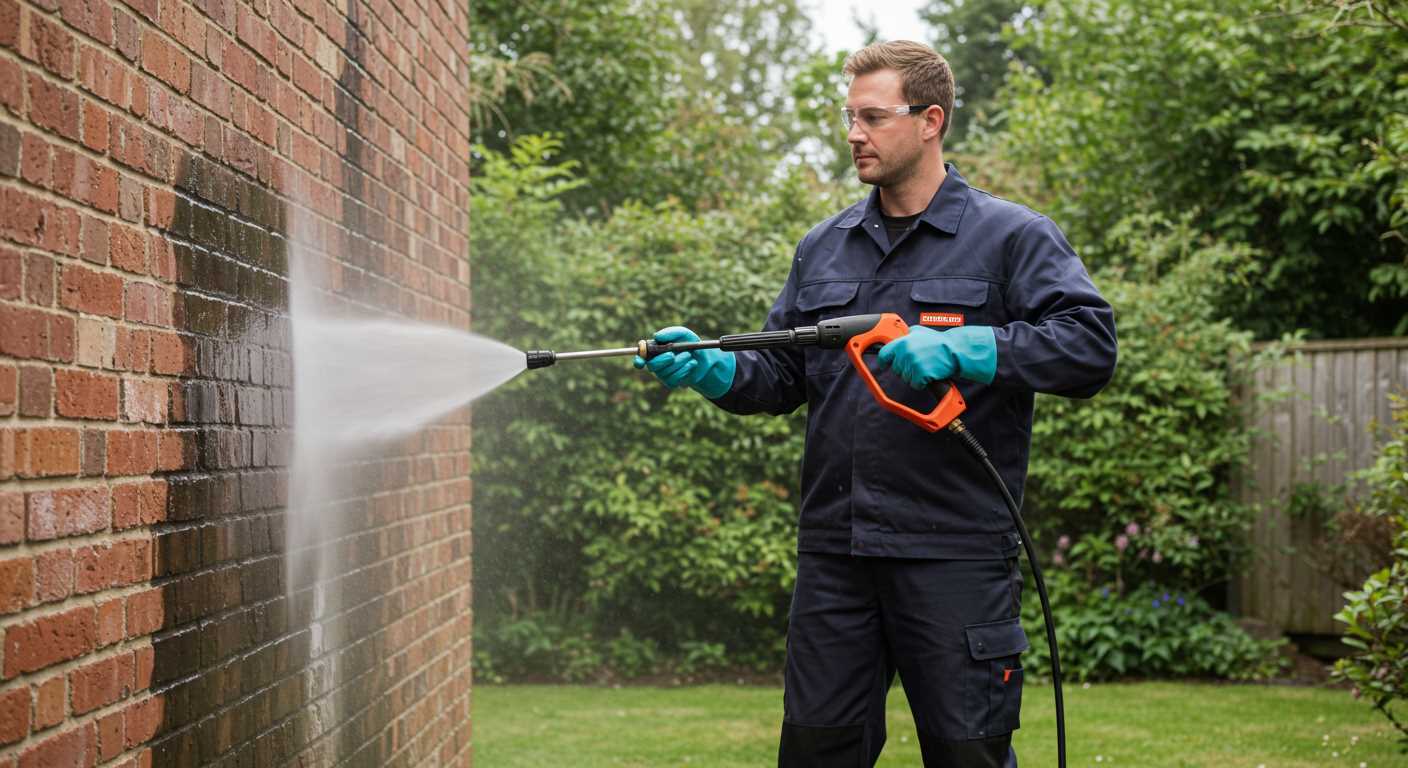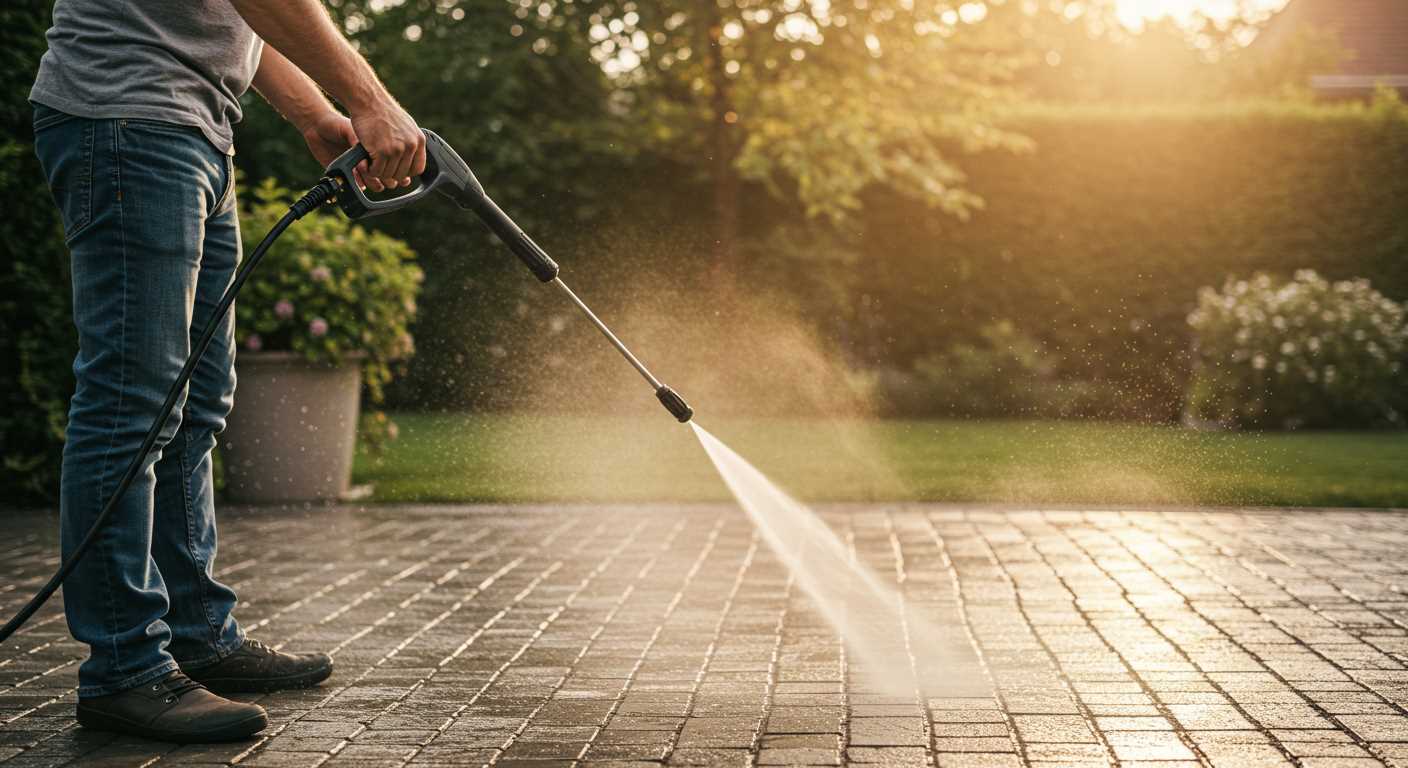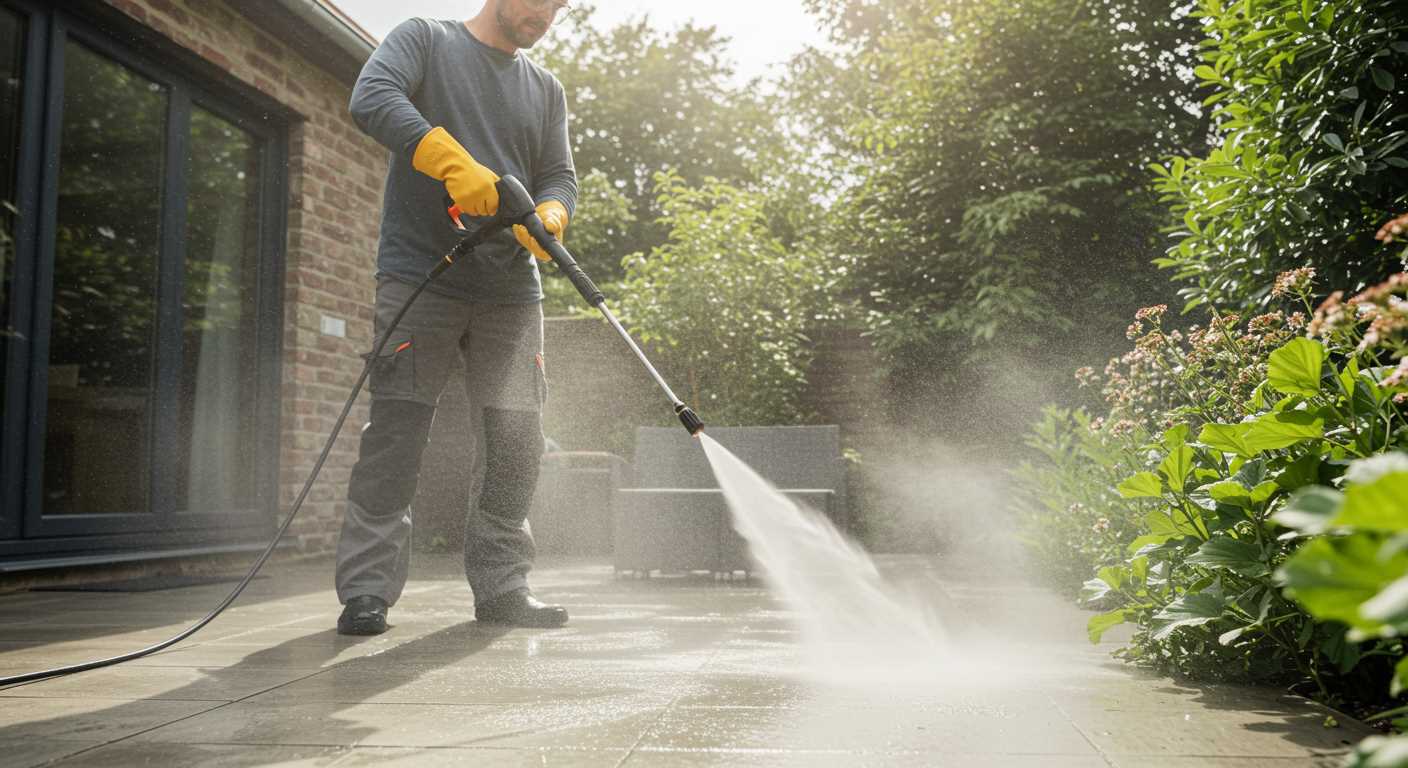




Begin with a quality inline heater, a simple yet effective addition to your setup. I remember a time when I struggled with stubborn grease on a commercial kitchen floor. The cold system just wasn’t cutting it. After installing an inline heater, the transformation was immediate; I tackled the grime with ease and saved hours of labour.
Ensure the heater is compatible with your unit. I’ve seen too many people overlook this detail, leading to frustration and wasted time. Check the specifications and connection types–this step can save you from unnecessary headaches. Once you connect the heater, adjust the temperature settings according to the cleaning task at hand.
For optimal results, consider using a proper detergent or cleaning solution that activates better with heat. One time, I experimented with various chemicals and found that certain formulations worked wonders when heated, breaking down tough stains more efficiently. Remember to follow the manufacturer’s guidelines for the best outcome.
Lastly, always monitor the water temperature and pressure levels. I’ve had instances where I got carried away with settings, leading to equipment strain. Keep an eye on gauges to maintain a balance that ensures longevity for your machine.
Understanding the Basics of Pressure Washers
Each unit operates on a straightforward principle: a motor drives a pump that generates high-pressure fluid flow. The effectiveness of this mechanism relies on several key components, including the pump type, motor power, and nozzle design. In my years testing various models, I noticed that the pump’s construction significantly impacts durability and performance. For instance, brass pumps often outlast their plastic counterparts, especially in demanding tasks.
It’s important to consider the motor’s power. Electric motors are quieter and easier to maintain, while gas engines provide more mobility and higher pressure ratings. In many instances, I found that electric models work well for household tasks, but the gas-powered versions excel in commercial settings where heavy-duty cleaning is necessary.
Nozzle selection also plays a critical role in achieving the desired outcome. The angle of the spray can greatly influence the cleaning efficiency. I often switched between different nozzles, adjusting the spray pattern depending on the surface–narrow for tough grime and wider for larger areas. This simple adjustment made a remarkable difference in performance.
Another aspect to consider is the compatibility of accessories. Various attachments, like surface cleaners and extension wands, enhance functionality, allowing for versatile applications. I once added a rotating brush to a standard model, transforming it into a formidable tool for cleaning patio furniture. This adaptability extends the usefulness of the equipment beyond standard applications.
Finally, maintenance cannot be overlooked. Regular checks of the pump oil, filters, and hoses are crucial for longevity. I’ve seen too many units fail prematurely due to neglect. A little attention goes a long way in preserving the investment and ensuring consistent performance over time.
Choosing the Right Heating Method for Your Washer
For optimal results, selecting the correct heating method is crucial. Electric heating elements provide a straightforward solution, often integrated into the unit itself. This option is perfect for those looking to improve their cleaning efficiency without major modifications. I recall using an electric heater attachment once. It seamlessly connected, transforming my unit into a hot cleaner in minutes.
Another viable choice is a gas-powered heater. This method delivers high heat output quickly, making it ideal for larger, more demanding jobs. I remember tackling a grease-stained garage floor using a gas-powered heater. The combination of heat and pressure cut through the grime effortlessly, showcasing the power of this heating approach.
For those who prefer a more DIY approach, external heating systems offer flexibility. These can be custom-built to suit specific needs, allowing for greater control over temperature settings. I once encountered a colleague who rigged a portable water heater to their cleaner for a project on a construction site. The results were impressive, demonstrating that with the right setup, versatility is at your fingertips.
When considering which method best suits your needs, think about the frequency of use, available space, and heating efficiency. Below is a comparison table to help you decide:
| Heating Method | Advantages | Disadvantages |
|---|---|---|
| Electric Heating Element | Easy integration, user-friendly | Limited heat output for heavy-duty tasks |
| Gas-Powered Heater | High heat output, quick results | Requires more maintenance, fuel costs |
| External Heating System | Customisable, great for varied tasks | Setup complexity, potential for leaks |
Finally, if you’re considering using your unit indoors, ensure it’s compatible with enclosed spaces. You can explore options like a pressure washer for using indoors to maintain safety while achieving effective results.
Installing a Water Heating Attachment
To enhance your cleaning system, consider adding a water heating attachment. It’s a straightforward process that can significantly upgrade your equipment’s performance. Begin by selecting a compatible heating unit that matches the specifications of your existing setup. It’s essential to check the flow rate and pressure ratings to ensure optimal compatibility.
Once you have the right heating device, gather the necessary tools: wrenches, screwdrivers, and any plumbing fittings that may be required. Start by turning off and disconnecting your machine from its power source. This step is crucial for safety. Next, follow the manufacturer’s guidelines for installing the heating attachment. Typically, this involves connecting the heater to your main unit’s inlet and outlet ports, ensuring tight seals to prevent leaks.
After securing the connections, test the setup by running the system on a low setting. Watch for any irregularities in performance. If everything functions smoothly, gradually increase the temperature settings while monitoring pressure levels. This will help you ascertain the effectiveness of your new attachment. Trust me, the difference will be evident, especially in tackling tougher grime and grease.
Remember to perform regular maintenance on the heating unit. This includes checking for any buildup of minerals or debris that could impede its effectiveness. Keeping the system clean will prolong the lifespan of both the heater and your primary cleaning apparatus.
Lastly, always consult the user manual for specific instructions tailored to your model. Each setup may have unique requirements, and following these closely will save you time and frustration in the long run.
Modifying Existing Components for Heat Generation
Replace the standard electric element with a higher wattage unit. This simple swap can significantly increase heating efficiency and speed. Ensure that the new element is compatible with the existing wiring and circuit to prevent overload. I once upgraded a unit by swapping out the factory-installed element for one rated at 3000 watts. The difference in performance was remarkable, cutting heating time by nearly half.
Consider insulating the hoses and the pump casing. Adding insulation reduces heat loss, allowing for quicker temperature rises and maintaining heat during operation. I used high-temperature silicone wrap on a few hoses, which not only improved heat retention but also protected them from wear and tear. The process is straightforward and pays off in improved performance.
Adjust the thermostat settings if your model allows for it. Many units come with adjustable thermostats that can be calibrated for higher temperatures. I recall recalibrating a unit to reach levels beyond its factory settings, which enhanced its cleaning capabilities on tougher grime.
Incorporate a heat exchanger from a compatible model. This modification can provide a robust heating solution. Choose an exchanger that matches your pump’s flow rate for optimal performance. I successfully integrated an aftermarket heat exchanger into a unit that originally lacked one, resulting in a remarkable boost in cleaning efficiency.
Utilise a more powerful pump if possible. While this may require additional modifications, a pump with a higher PSI rating increases the overall cleaning power when combined with heat. I remember upgrading a pressure washer with a more potent pump, which not only improved the heat application but also reduced the cleaning time drastically.
Ensure all modifications comply with safety standards. While it’s tempting to push the limits, safety should always come first. I’ve learned through experience that taking shortcuts can lead to disastrous results. Always double-check your work and consult with professionals if necessary.
Safety Precautions When Heating Water
Always wear appropriate personal protective equipment (PPE). This includes heat-resistant gloves, safety goggles, and sturdy footwear. The risk of burns is significant, so ensure your skin is well protected.
Proper Equipment Setup
- Ensure your heating device is installed according to the manufacturer’s guidelines.
- Regularly inspect hoses and connections for wear and leaks, as these can lead to dangerous situations.
- Keep the area around the equipment clear of flammable materials; heat sources can ignite nearby substances.
Monitoring and Maintenance
- Constantly monitor the temperature of the fluid. Use a reliable thermometer to avoid overheating.
- Install pressure relief valves to prevent dangerous overpressure situations.
- Maintain the heating system by regularly checking for sediment buildup and other obstructions that could cause overheating.
In my experience, I once encountered a situation where a heating unit malfunctioned due to a clogged filter. The pressure built up excessively, leading to a near disaster. Regular maintenance could have prevented this incident.
Always have a fire extinguisher nearby, rated for flammable liquids, to tackle any unexpected fires swiftly.
Educate all operators on the risks involved and ensure they understand emergency procedures. Everyone should know how to turn off the heating system quickly and safely in case of an emergency.
Lastly, be cautious of steam burns. Even at lower temperatures, steam can cause severe injuries. Keep a safe distance from the outlet when the system is in operation.
Testing the Heated Output
To validate the effectiveness of the heating modification, measure the output temperature after implementing changes. Use a reliable thermometer to take readings at the nozzle. Ensure the unit runs with a consistent flow rate to acquire accurate results. Aim for a target temperature between 50°C and 70°C for optimal cleaning power.
Procedure for Testing
Start by connecting the modified unit to a typical garden hose. Turn on the machine and allow it to operate for a few minutes. Then, place the thermometer at the nozzle tip while activating the trigger. Record the temperature once it stabilizes. Repeat this process multiple times to ensure consistent readings.
Evaluating Results
If the output temperature does not reach the desired level, check for any blockages or inefficiencies in the system. Inspect the heating element, connections, and hoses for any signs of wear or damage. Adjustments might be necessary to enhance the heating capabilities. Always refer to the manufacturer’s guidelines for troubleshooting.
Incorporating the right cleaning agents can significantly enhance the overall effectiveness. For example, using the best chemical for pressure washing concrete can improve cleaning results, especially when combined with heated fluid.
Maintenance Tips for a Hot Water Pressure Washer
Regularly inspect the heating element for any signs of wear or damage. A worn-out element can lead to inefficient heating and possible breakdowns. I once encountered a unit that failed to reach optimal temperatures due to a cracked heating coil, which was easily rectified with a replacement.
Flush the system periodically to remove sediment and mineral deposits. This is particularly important if you are using hard water. I learned the hard way that neglecting this step can lead to reduced performance and costly repairs. A simple flush with a vinegar solution can work wonders.
Check hoses and connections for leaks. Any leaks can affect the performance and efficiency of the unit. I recall a situation where a minor leak in a hose reduced the heating efficiency significantly, causing frustration during a job. Regular inspections can prevent this hassle.
Keep the exterior clean and free from debris. Dust and grime can accumulate around the heating components and hinder performance. I make it a habit to wipe down the unit after each use to ensure optimal airflow and prevent overheating.
Inspect and clean water filters and strainers regularly. Clogged filters can restrict water flow to the heating element, leading to overheating and potential damage. In my experience, I’ve found that a quick check and clean can save hours of troubleshooting down the line.
Lastly, ensure that the unit is stored in a climate-controlled environment. Extreme temperatures can affect the integrity of the components. I’ve seen units left in unheated garages suffer from cracked parts because of the cold. Proper storage extends the lifespan of the equipment and keeps it ready for action.




.jpg)


